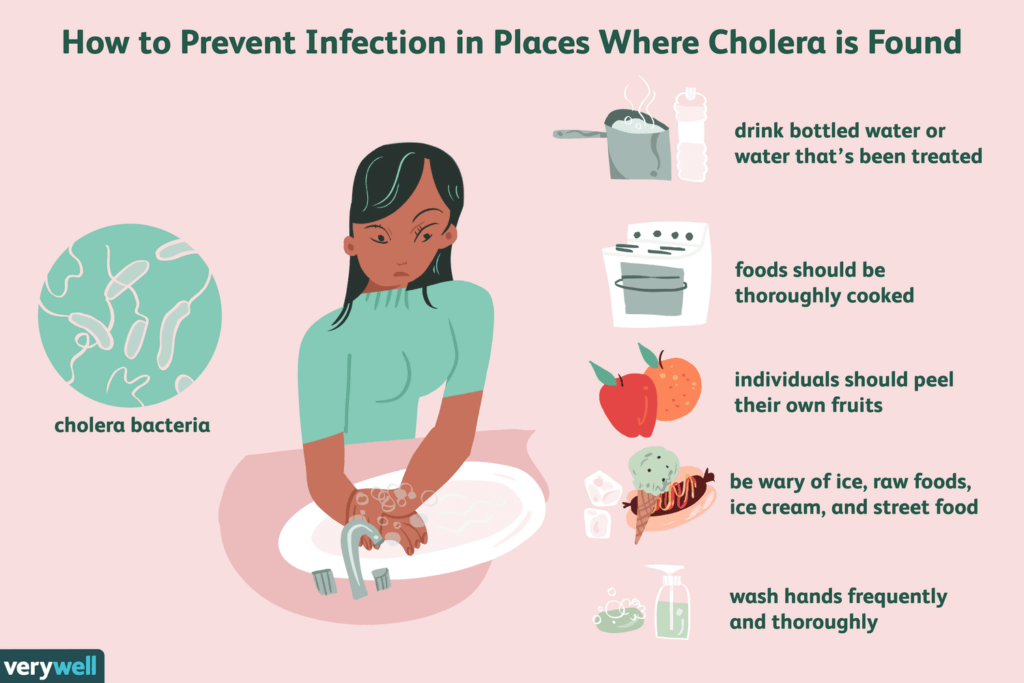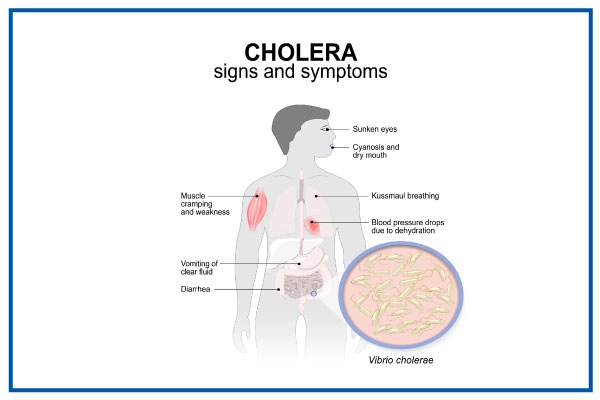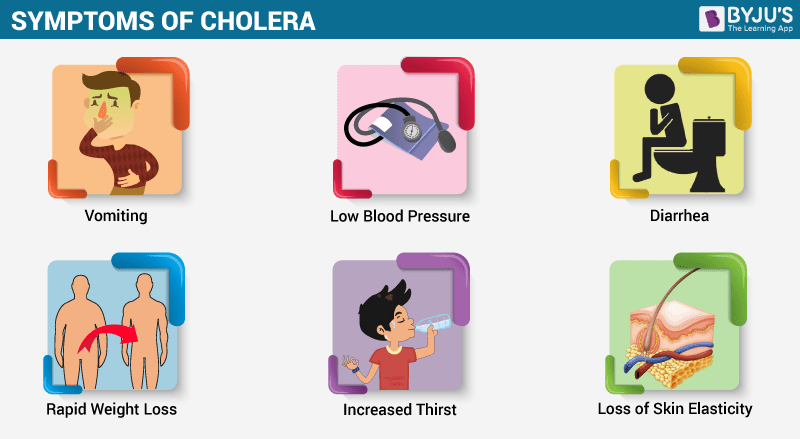In this article, you will gain a comprehensive understanding of cholera: what causes it, the common symptoms to watch out for, and the various treatments available. Cholera is a bacterial infection that affects the intestines and can lead to severe dehydration if not properly treated. By shedding light on this often misunderstood disease, you will be equipped with the knowledge to recognize its symptoms and take appropriate action if needed. So, let’s embark on a journey to unravel the mysteries of cholera and arm ourselves with valuable information to keep ourselves and others safe.

Overview of Cholera
Cholera is a bacterial infection that affects the intestines and causes severe diarrhea. It is caused by the bacterium Vibrio cholerae, which is typically spread through contaminated food and water. Cholera has a long history, with recorded outbreaks dating back to ancient times. It continues to be a global health concern, particularly in regions with poor sanitation and limited access to clean water.
Definition of Cholera
Cholera is an infectious disease caused by the bacterium Vibrio cholerae. It is characterized by severe watery diarrhea, which can lead to dehydration and electrolyte imbalances. If left untreated, cholera can be fatal within hours.

History of Cholera
Cholera has plagued humanity for centuries. The earliest recorded outbreaks date back to ancient times, with descriptions of cholera-like symptoms found in ancient Sanskrit texts. However, the disease gained global notoriety in the 19th century, when it spread from its initial hotspots in the Indian subcontinent to other parts of the world through trade and travel. Cholera pandemics struck major cities, causing widespread panic and high mortality rates. Advances in sanitation and the development of safe water systems have significantly reduced the impact of cholera outbreaks in many regions, but it remains a major health concern in developing countries.
Global Incidence and Epidemiology
Cholera is most prevalent in regions where there is limited access to clean water and sanitation facilities. According to the World Health Organization (WHO), an estimated 1.3 to 4 million cases of cholera occur worldwide every year, resulting in 21,000 to 143,000 deaths. Sub-Saharan Africa, Southeast Asia, and Haiti are among the regions with the highest incidence of cholera. Outbreaks are often associated with natural disasters, such as floods or earthquakes, as well as crowded living conditions and inadequate health infrastructure.

Causes of Cholera
Bacterial Infection: Vibrio cholerae
Cholera is caused by infection with the bacterium Vibrio cholerae. The bacterium produces a toxin that affects the lining of the intestine, leading to excessive fluid secretion and severe diarrhea. There are different strains of Vibrio cholerae, with some strains being more virulent than others. Understanding the genetic makeup and characteristics of different strains is crucial for effective surveillance and control measures.
Contaminated Food and Water
The primary mode of transmission for cholera is through the consumption of contaminated food and water. Vibrio cholerae thrives in water sources contaminated with fecal matter, often due to poor sanitation and inadequate sewage systems. Ingestion of even small amounts of contaminated water or food can lead to infection. Seafood, particularly shellfish, harvested from contaminated waters can also be a source of infection.
Factors Contributing to Cholera Outbreaks
Several factors contribute to the occurrence and spread of cholera outbreaks. Inadequate sanitation, lack of access to clean water, and crowded living conditions create an environment conducive to the transmission of Vibrio cholerae. Natural disasters, such as floods or earthquakes, can further exacerbate the spread of cholera by contaminating water sources and disrupting sanitation systems. Additionally, malnutrition and weakened immune systems increase the susceptibility to cholera infection and complications.
Symptoms of Cholera
Diarrhea: the Main Symptom
The hallmark symptom of cholera is profuse watery diarrhea. The diarrhea is often described as “rice-water” due to its appearance, which is pale and watery with flecks of mucus and small pieces of undigested food. The frequency and volume of diarrhea can be staggering, leading to rapid fluid loss.
Dehydration and Electrolyte Imbalances
The excessive fluid loss caused by cholera diarrhea can rapidly lead to dehydration and electrolyte imbalances. Dehydration can range from mild to severe, with symptoms including thirst, dry mouth, decreased urination, dry skin, and low blood pressure. Electrolyte imbalances, particularly low levels of potassium and sodium, can cause muscle cramps, weakness, and irregular heart rhythms.
Cholera Symptoms in Children
Cholera can affect individuals of all ages, but young children are particularly vulnerable to its severe consequences. Children with cholera may exhibit additional symptoms, such as irritability, lethargy, sunken eyes, and a soft spot on the head that appears sunken. Prompt medical attention and appropriate rehydration measures are critical for children with cholera due to the increased risk of complications and death.

Diagnosis of Cholera
Clinical Examination and Patient History
Diagnosing cholera is primarily based on clinical evaluation and patient history, particularly the presence of severe watery diarrhea. In areas where cholera is endemic, healthcare providers are trained to recognize the characteristic symptoms and signs of cholera, such as the rice-water diarrhea. It is important to provide accurate information about recent travel, exposure to contaminated water or food, and any known cholera outbreaks in the local area.
Laboratory Tests for Cholera
Laboratory tests can help confirm the diagnosis of cholera and determine the specific strain of Vibrio cholerae causing the infection. Stool samples are collected and tested for the presence of the bacterium. Polymerase chain reaction (PCR) tests can detect Vibrio cholerae DNA, while culture tests can isolate the bacteria for further analysis. Rapid tests are also available in some settings, providing a quicker diagnosis and allowing for prompt initiation of treatment.
Prevention and Control of Cholera
Safe Water and Sanitation Practices
Preventing cholera outbreaks requires a comprehensive approach that includes improving access to safe water and adequate sanitation facilities. This involves initiatives such as constructing and maintaining clean water sources, implementing proper waste management systems, promoting hand hygiene, and educating communities on the importance of practicing safe water and hygiene practices. Chlorination of water sources and proper sewage disposal can significantly reduce the risk of cholera transmission.
Vaccination and Cholera
Vaccination plays a crucial role in preventing and controlling cholera outbreaks. Oral cholera vaccines are available and have been shown to be highly effective in reducing the incidence of cholera in endemic areas and during outbreaks. These vaccines stimulate the production of antibodies against Vibrio cholerae, providing immunity to the infection. Mass vaccination campaigns, particularly in high-risk areas, can help reduce the burden of cholera and protect vulnerable populations.
Cholera Outbreak Management
During cholera outbreaks, rapid response and effective management are essential to contain the spread of the disease. This includes early detection and reporting of cases, prompt treatment of affected individuals, and implementation of infection control measures. Coordination between healthcare providers, public health authorities, and international organizations is crucial for a timely and efficient response. In addition, community engagement and public awareness campaigns can help promote preventive measures and reduce panic during outbreaks.

Treatment of Cholera
Rehydration Therapy: Oral and Intravenous
The cornerstone of cholera treatment is rehydration therapy, which aims to replace the fluid and electrolytes lost through diarrhea. Oral rehydration solution (ORS) is the preferred method for mild to moderate dehydration, as it can be easily administered at home or in healthcare settings. ORS contains a proper balance of salts and sugars to facilitate the absorption of water. Severe dehydration may require intravenous fluids, particularly if the individual is unable to tolerate oral fluids.
Antibiotic Administration
In addition to rehydration therapy, antibiotics are often prescribed to treat cholera and reduce the duration of diarrhea. Antibiotics, such as doxycycline or azithromycin, can help eliminate the Vibrio cholerae bacteria and hasten recovery. However, antibiotic resistance is a growing concern, and the choice of antibiotics should be guided by local resistance patterns and individual patient factors.
Nutritional Support
Cholera can cause significant nutrient loss and malnutrition, particularly in severe cases. Adequate nutrition is essential for the body’s recovery and immune response. Nutritional support, such as the provision of fortified foods and supplementation with vitamins and minerals, may be necessary during the acute phase of cholera and during the recovery period.
Addressing Underlying Health Issues
Cholera tends to affect individuals with underlying health issues more severely. Prompt identification and management of these underlying conditions, such as diabetes or immune deficiencies, are crucial for improving the outcome of cholera treatment. Close monitoring and supportive care are necessary to address any complications and ensure a full recovery.
Complications of Cholera
Dehydration-related Complications
The rapid fluid loss associated with cholera can lead to severe dehydration and potentially life-threatening complications. Dehydration can cause kidney failure, electrolyte imbalances, and a drop in blood volume, which can result in shock and organ damage. Rehydration therapy is vital in preventing and managing these complications.
Cholera and Pregnancy
Pregnant women are at an increased risk of severe cholera infections and complications. Cholera can lead to dehydration and preterm labor, putting both the mother and the unborn baby at risk. Pregnant women should seek immediate medical attention if they develop symptoms of cholera, as prompt rehydration and treatment can help minimize the impact on both the mother and the baby.
Long-Term Effects of Cholera
While most individuals recover fully from cholera with timely treatment and appropriate rehydration, some may experience long-term effects. These can include persistent digestive issues, such as irritable bowel syndrome, as well as mental health effects, such as anxiety and post-traumatic stress disorder (PTSD). Long-term follow-up and support are important for individuals who have had cholera to address any ongoing health concerns.
Cholera and Travel
Traveler’s Diarrhea and Cholera
Cholera is considered a risk for travelers visiting areas with poor sanitation and limited access to clean water. Traveler’s diarrhea, a common health problem among travelers, can sometimes be caused by cholera infection. It is essential for travelers to practice good hygiene, drink only safe water, and consume food from reliable sources to minimize the risk of cholera and other gastrointestinal infections.
Precautions for Travelers
Travelers should take certain precautions to protect themselves from cholera and other waterborne illnesses. This includes drinking only boiled or bottled water, avoiding ice cubes and raw or undercooked seafood, and practicing good hand hygiene. Travelers to high-risk areas may also consider getting vaccinated against cholera before their trip. It is advisable to seek advice from a healthcare provider or travel medicine specialist for specific recommendations based on the destination and individual health status.
Cholera Research and Developments
New Treatment Approaches
Ongoing research continues to explore new treatment approaches for cholera. This includes investigating the use of novel antibiotics, such as rifaximin, which may have better effectiveness against drug-resistant strains of Vibrio cholerae. Additionally, researchers are studying the potential of new cholera vaccines, including single-dose vaccines and those with improved stability for use in resource-limited settings.
Monitoring and Surveillance
Efforts in cholera monitoring and surveillance are crucial for tracking outbreaks, identifying high-risk areas, and implementing timely interventions. Enhanced surveillance systems, including the use of technology and real-time data reporting, can help monitor the spread of cholera and facilitate prompt response. Monitoring water sources, monitoring water sources, and conducting regular quality assessments are also essential for preventing cholera outbreaks.
Conclusion
The impact of cholera on public health cannot be understated. Although advancements in sanitation and healthcare have significantly reduced the global burden of cholera, it remains a persistent threat in many regions, particularly those with poor infrastructure and inadequate access to clean water and sanitation facilities. Efforts to control and prevent cholera, such as promoting safe water and hygiene practices, implementing vaccination programs, and strengthening healthcare systems, are vital for reducing the incidence and impact of this deadly disease. Building awareness and investing in research and development are essential in the ongoing fight to eradicate cholera and improve global health outcomes.